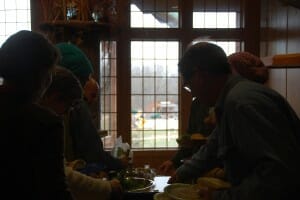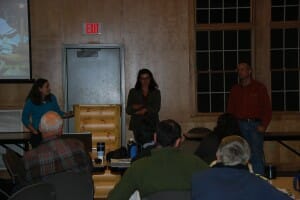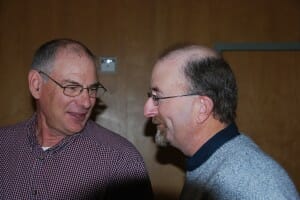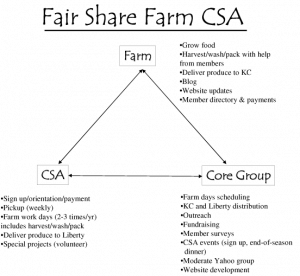CSA Mini School
Approximately 60 people came together December 2-3 at the Des Moines Area Y-Camp to learn more about operating a CSA. Attendees ranged from farmers considering CSA as a farm model to those who had operated a CSA for 15 years. Three CSA farmers presented an amazing amount of information over the two days. It was nice to have insight from different perspectives.
Chris Blanchard operates Rock Spring Farm near Decorah. He sells about 140 CSA shares and offers CSA year-round. Chris also markets products from his 15 acres of certified organic vegetables to wholesale markets.
Rebecca Graff owns Fair Share Farm near Kearney, MO, with her husband Tom Ruggieri. They have 120 CSA members who are required to work on the farm. They provide CSA products for 24 weeks of the growing season. Tom and Rebecca only market their products through their CSA.
Margaret Marshall is the CSA manager at Featherstone Farm near Rushford, MN. She works with farmer Jack Hedin and Featherstone staff to coordinate over 30 drop sites and 860 shares. Featherstone Farm markets half of their products through CSA and the other half through wholesale outlets.

Attendees dished up delicious lunch. Tomoko and Suzi created magic in the kitchen throughout the workshop.
Too much was discussed to summarize all here, but some highlights include:
Speakers asked the audience if CSA was right for them, and if they were ready to operate a CSA. For example: Have you: produced the quantities you’ll need, of at least eight crops, each week throughout your promised harvest season?
Presenters advised new CSA farmers to start small and overplant the first few years to ensure enough products for their new customers. The first year: plant 2x your estimated need to meet supply.
Rebecca Graff shared her succession planting plan, which is also available online: http://fairsharefarm.com/info/pdf/fair%20share%20farm%20seeding%20planting%20sheet.xls. Not only can you plan forward for succession planting, but you can plan backwards: set your target harvest date and work back from there.
While discussing what to grow, Chris Blanchard suggested that every vegetable farmer should own a copy of Knott’s Vegetable Handbook.
Rebecca Graff talked about how they incorporate no-till into some of their vegetables. The pile a thick layer of hay on the planting area-to-be, pull the hay off before planting, then plant. Is anyone in Iowa doing this or interested in trying it?
Chris Blanchard explained a way to create profit goals for vegetable production:
- Goal: $50,000
- Divide by .40 ( 40% revenue ends up as profit)
- Equals $125,000
- Add $10,000 capitol investment
- Total revenue projection $135,000
- Collect $10,000 revenue per acre
- $135,000 divided by $10,000 per acre = 13.5 acres of production
His example included information from his knowledge and experience. However, he brought up a good point during the day. “All CSAs presented were examples, not models.” To calcuate realistic CSA profit goals, it is important for farmers that reflect their own profit margins and income per acre.
Margaret Marshall gave a good example of how hard it is to find long term land. Featherstone farmer Jack Hedin and his wife just purchased farm land last year. Until then the farm had been on rented ground, creating less stability for the farm. It is impressive that Jack perservered and continued to grow a business during multiple land shifts.
Rebecca Graff defined responsibilities of her farm, CSA members, and core group:
Margaret Marshall explained her intricate database-driven delivery system for almost 40 drop sites.



